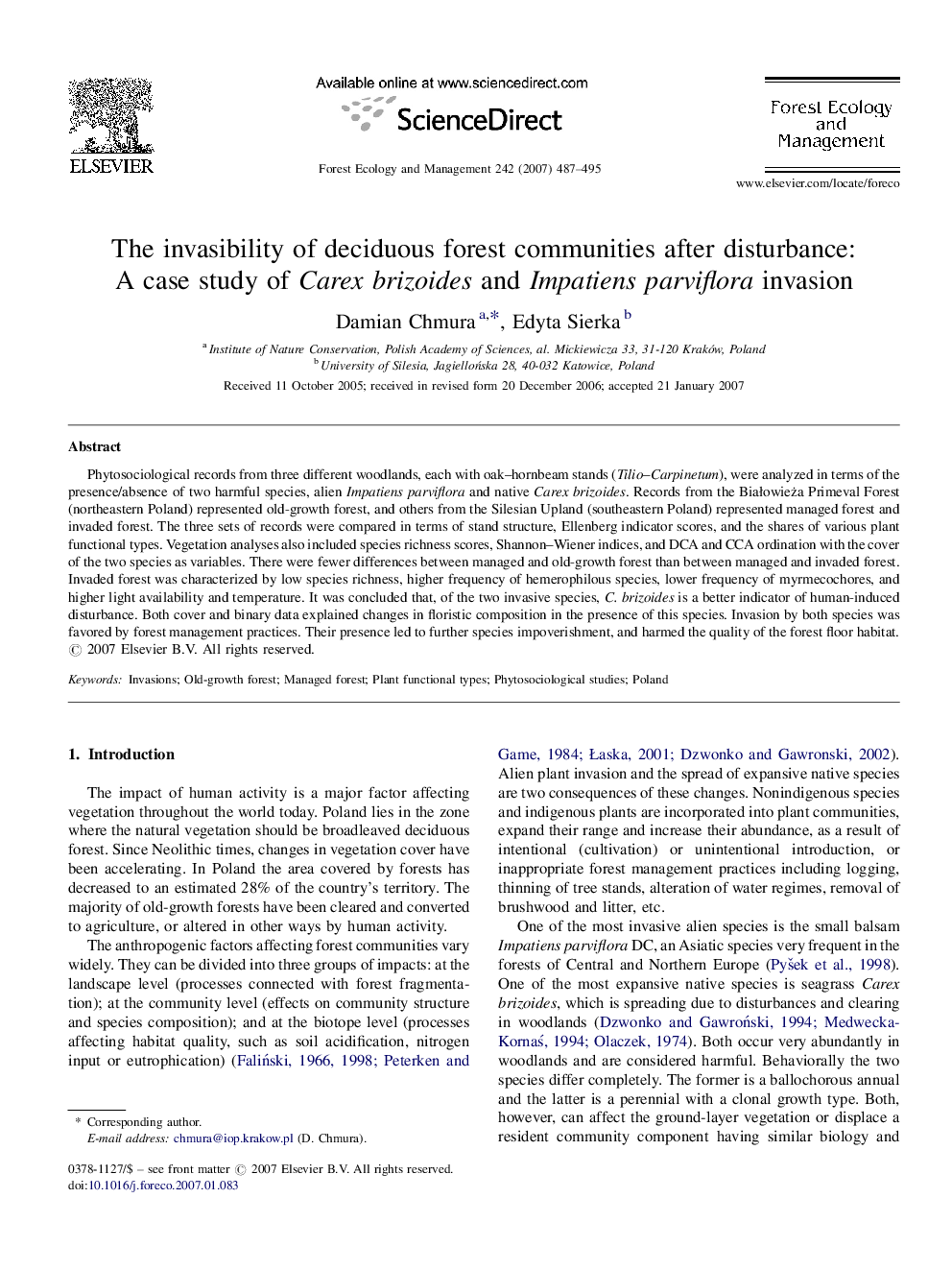| Article ID | Journal | Published Year | Pages | File Type |
|---|---|---|---|---|
| 90660 | Forest Ecology and Management | 2007 | 9 Pages |
Phytosociological records from three different woodlands, each with oak–hornbeam stands (Tilio–Carpinetum), were analyzed in terms of the presence/absence of two harmful species, alien Impatiens parviflora and native Carex brizoides. Records from the Białowieża Primeval Forest (northeastern Poland) represented old-growth forest, and others from the Silesian Upland (southeastern Poland) represented managed forest and invaded forest. The three sets of records were compared in terms of stand structure, Ellenberg indicator scores, and the shares of various plant functional types. Vegetation analyses also included species richness scores, Shannon–Wiener indices, and DCA and CCA ordination with the cover of the two species as variables. There were fewer differences between managed and old-growth forest than between managed and invaded forest. Invaded forest was characterized by low species richness, higher frequency of hemerophilous species, lower frequency of myrmecochores, and higher light availability and temperature. It was concluded that, of the two invasive species, C. brizoides is a better indicator of human-induced disturbance. Both cover and binary data explained changes in floristic composition in the presence of this species. Invasion by both species was favored by forest management practices. Their presence led to further species impoverishment, and harmed the quality of the forest floor habitat.
